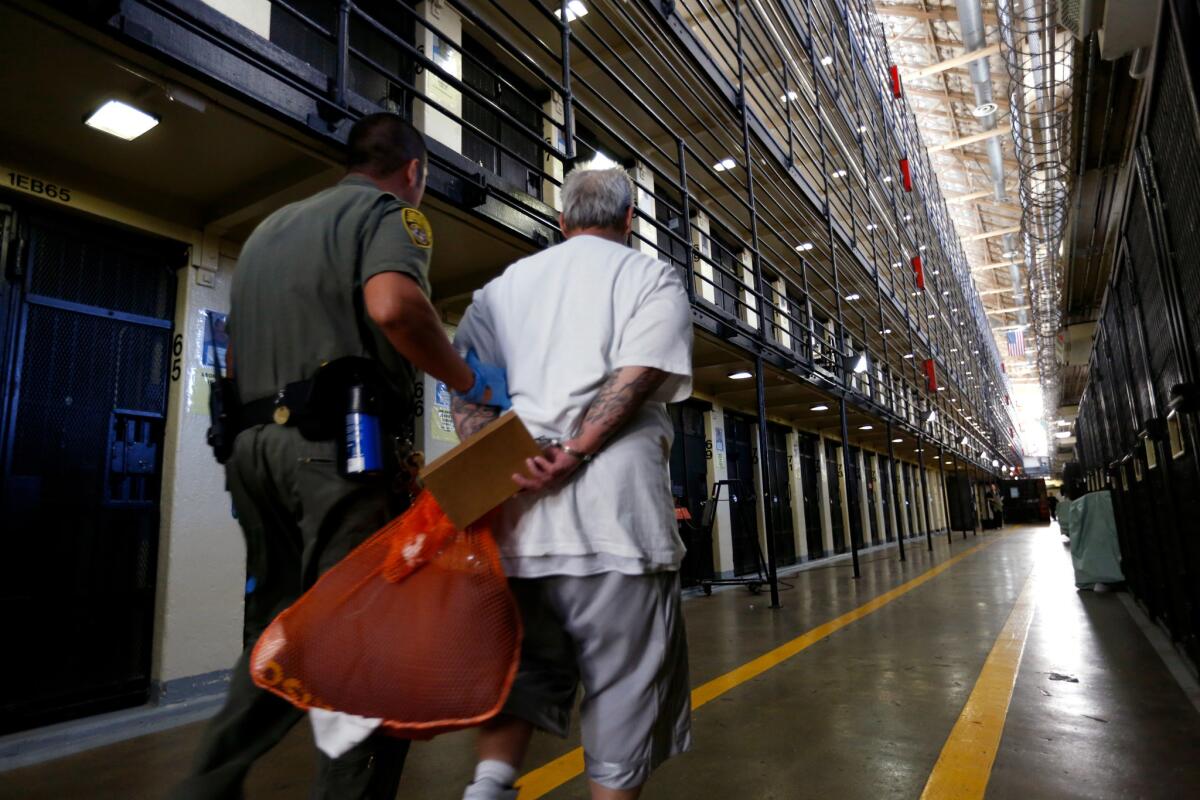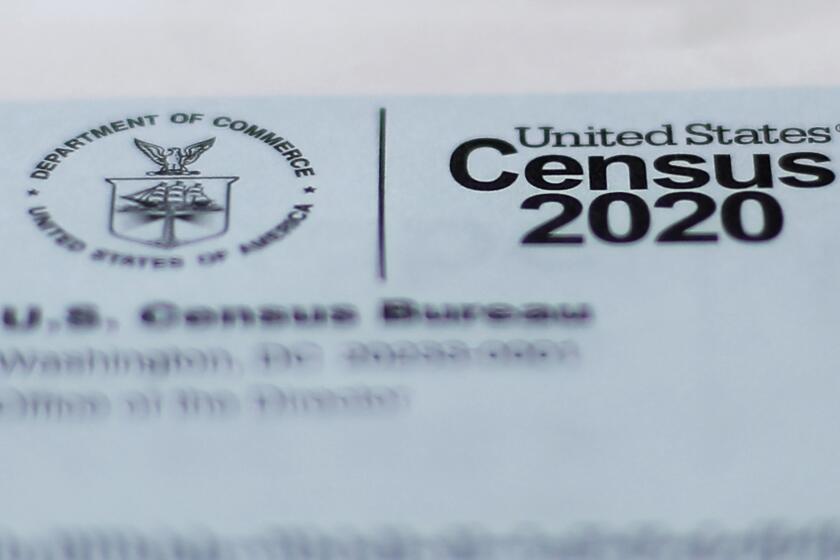Editorial: Death row inmates have constitutional rights, too

- Share via
Texas death row inmate Ray Freeney asked the federal courts last year to grant him a new sentencing trial because of the bizarre practice among some Texas judges of simply adopting language written by prosecutors as their rulings. Freeney sought a new sentencing hearing on the grounds that his lawyer incompetently failed to present mitigating evidence, but the judge rejected that claim and adopted the prosecutors’ findings of fact, word for word, even before his new attorneys presented their arguments. The 5th Circuit Court of Appeals rejected Freeney’s appeal, and the U.S. Supreme Court refused to take it up. Why? Because a 1996 federal law effectively said they had to.
For decades, supporters of the death penalty have complained that executions are needlessly held up by time-consuming, frivolous and long-shot appeals that the condemned file to delay their date with the executioner. That was one of the impulses behind the 1996 Anti-Terrorism and Effective Death Penalty Act, which limited consideration of the habeas corpus appeals that inmates can use to challenge their state convictions and sentences in federal court.
The law undermined the spirit of vital constitutional guarantees and granted unwarranted deference to state court rulings on capital cases. This should trouble us on a number of levels, and it needs to be fixed.
The Framers embedded habeas protections in the U.S. Constitution as a bulwark against false imprisonment by the government. It is a fundamental element of the concept of individual liberties that dates to the Magna Carta.
Briefly, people who believe the government has unconstitutionally imprisoned them can seek redress in the courts. In the capital punishment system, habeas petitions are used primarily by the condemned to argue that their state convictions or sentences involve constitutional violations — fake evidence, perjured witnesses, prosecutorial misconduct and other acts that unfairly tipped the scales of justice against them. Not every error, of course, leads to an unfair or unjust trial. The federal courts, which get involved after state appeals have been exhausted, often distill habeas appeals into that pivotal issue: Did the constitutional violation occur, and did it lead to a denial of justice?
L.A.’s major housing problem is not the small number of homes sitting empty. It’s the shortage of housing affordable to middle- and low-income Angelenos.
But the 1996 act — enacted partly in response to the 168 lives lost when domestic terrorist Timothy McVeigh bombed the federal building in Oklahoma City the year before — curtailed that review. Among other restrictions, it says that a federal court generally can’t grant a habeas petition unless the state court decision has contradicted or applied an unreasonable interpretation of Supreme Court precedents.
“The Supreme Court has repeatedly interpreted this requirement so as to limit successful habeas petitions to those in which the alleged violations are so blatant as to be totally indefensible,” U.S. District Court Judge Jed. S Rakoff wrote in 2016, lamenting that the effect was to halt federal review of “the steamroller systems of criminal justice found in too many states.”
The effect has been catastrophic for the condemned who are innocent, or who at a minimum did not receive fair trials or sentencing hearings. A landmark study from Columbia Law School reported that, from 1973 to 1995, federal and state judges found serious, reversible error in about 70% of death penalty cases, nearly half of which were set aside in state appeals. Federal review found 40% of the remaining cases involved errors that the state courts missed.
Another study in 2009 found that before the 1996 crime law went into effect, more than half of federal appeals were successful; afterward, that dropped to about 12%. A fresh study of Texas cases published this year in the UCLA Law Review found “death-sentenced inmates prevailed two-thirds of the time” before the 1996 federal law but that since then “their success rate percentage is in the single-digits.”
Clearly, a whole lot more people on death row previously found relief in federal courts; now inmates — like Freeney — who have been sentenced to death are not. And it’s not because the state courts have gotten better. It’s because the 1996 act undermined constitutional rights.
Voluntary response rates to the 2020 census reveal social inequality — and spotlight how crucial an accurate count is to Los Angeles and California.
Too often, public discussions of the death penalty get caught up in the legitimate emotions surrounding the crimes themselves. This page has a long history of opposing the death penalty in part because it is a barbaric relic that is applied disproportionately to people of color and low-income defendants. But it is also impossible to get right.
On occasion, police, prosecutors and witnesses lie or give false testimony that they believe is right. Many defense lawyers — often untrained in capital cases, poorly paid and overwhelmed by crushing caseloads — aren’t up to the task, leading to convictions not because of guilt, but because of ineffective legal help. Those systemic shortcomings have nothing to do with the heinous nature of the crime at hand. They spotlight the challenge in finding the truth and assigning guilt. And when the result of that process is an execution — possibly of an innocent person — then the system cannot be relied on.
But rely on it we do. If we are not going to abolish capital punishment, as The Times’ editorial board has urged, we must take every measure possible to reduce errors and to protect constitutional rights. The 1996 law was a move away from that. We have the studies to show how it has failed justice, and has failed us. Congress needs to repeal it.
More to Read
A cure for the common opinion
Get thought-provoking perspectives with our weekly newsletter.
You may occasionally receive promotional content from the Los Angeles Times.












